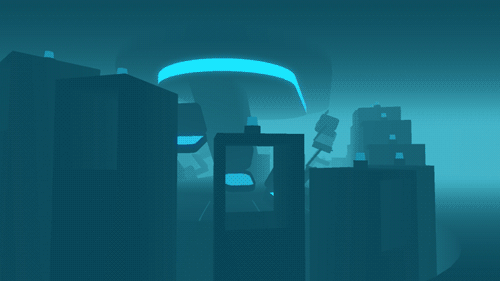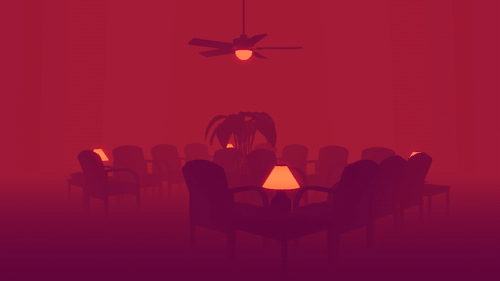Trending
Opinion: How will Project 2025 impact game developers?
The Heritage Foundation's manifesto for the possible next administration could do great harm to many, including large portions of the game development community.
Carl Burton takes the player to ordinary places, showing them offices, parking lots, and hotel lobbies through a surreal lens in Islands: Non-Places.

This interview is part of our Road to the IGF series. You can find the rest by clicking here.
Carl Burton takes the player to ordinary places, showing them offices, parking lots, and hotel lobbies through a surreal lens in Islands: Non-Places. Players will watch as these everyday locations come to life through Burton's animations, seeing them transform and reshape themselves through a lens of deep colors.
Burton sought to capture the particular feeling of a place as it becomes so common it is almost forgotten, and the mindspace these locations occupy. Through seeing these places come alive with hidden meaning, they become special and noteworthy, leaving players to wonder about what secrets lies beneath the mundane in their own private world.
This journey earned Burton a nomination for the Nuovo Award in the Independent Games Festival, and Gamasutra sought him out to talk about what drew him to show a hidden, beautiful side to the places we dismiss in our daily lives.
I worked with Sheldon Brown at the Experimental Game Lab at UCSD, but my primary background is in experimental animation.

I was making animated GIFs on my tumblr and I wanted to see if I could create an interactive space that captured a similar mood. My previous work was an animation called Shelter and I think there is a connection with the idea of a familiar space that reveals a hidden structure. Some influences are Marc Auge's book Non-Places: An Introduction to Supermodernity and Chris Watson's field recordings.
Unity, Playmaker, and Cinema 4D.
6-8 months.

They have an uncanny, strangely neutral feeling. The environments in Islands are all based on places you might pass through without thinking. They all blur together in memory, which makes them feel dreamlike. I wanted to see what would happen if those transitional spaces revealed an unusual depth or system behind them.
This isn't explicit in Islands, but part of the idea was that what you see happening is something that might happen every day in the world of the game. The 'surreal' behavior is mundane from the point of view of the world itself.
This is just intuitive. Sometimes the color can suggest temperature, like blue for refrigeration or orange for the warmth of a tropical forest. In other scenes it's more literal, like a dark purple for night.

I wanted to create an intuitive, 'easy' experience that led the player through something that was more surreal and idiosyncratic than you might expect from a 'casual' game. I'd like for the player to find the environments strangely compelling in a way that feels open-ended and hard to describe.
Inside, Everything, and Mu Cartographer.

It's hard to generalize about this given the range of people making games, but for me, personally, the biggest obstacles were time, money, and not coming from a background in coding. As for opportunities, similar to being able to upload animated shorts to Youtube/Vimeo, I'm drawn to any medium where you can distribute work online to a wide audience.
You May Also Like